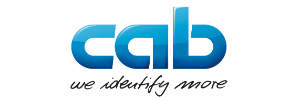Long before advanced manufacturing and the Internet of Things became evident, cab devices did far more than just printing on a label. The products’ architecture has always been designed according to intuitive operation, integration in automated production lines, and reliability.
Cab Technology’s general manager Alexander Bardutzky talked to the marketing department of cab Produkttechnik about the ever-increasing importance of devices being intelligent.
What has been the focus of attention in the development of cab’s industrial printers?
A. Bardutzky: We have manufactured and sold our established A+ printers for more than eight years. The requirements set by the market steadily increase; advanced manufacturing and the Internet of Things are key topics. The intelligence of devices is becoming more and more important. With the firmware architecture of the SQUIX printers, we already supply future opportunities.
How do SQUIX printers allow for Advanced Manufacturing?
A. Bardutzky: Our understanding of the Fourth Industrial Revolution is that mechanical and electrical engineering interacts with the latest information and communication technologies. To ensure optimum and safe processes, interfaces and protocols compliant to advanced manufacturing are needed.
Integration can be simplified by making use of currently establishing standards, such as OPC Unified Architecture (OPC UA) and MQ Telemetry Transport (MQTT). As for the SQUIX, the ethernet and wireless local area network (WLAN) interfaces offer the basis to bi-directionally exchange information with master networks, production planning, programmable logic controller (PLC), and other administration tools, as well as data transfer from external databases and centered monitoring of data transaction. Via the web interface, it is possible to set the printer, read out information, and observe the display output.
How do the industrial printers integrate in control processes?
A. Bardutzky: In order to integrate in a higher-level control process, the devices provide an input/output (I/O) interface. So printing can be started or interrupted via a PLC, a sensor or a hand switch. At the same time, status and warning messages are issued to the higher-level control, pointing out for example on the upcoming end of ribbon or interruption of the labelling.
What about operational habits?
A. Bardutzky: Operational habits are highly relevant. SQUIX printers feature a coloured 4.3in LCD display, with touchscreen function. The user interface is smartphone-like, with direct access to individual menu items. Explanatory videos can be played on the display and support the user in handling the device.

